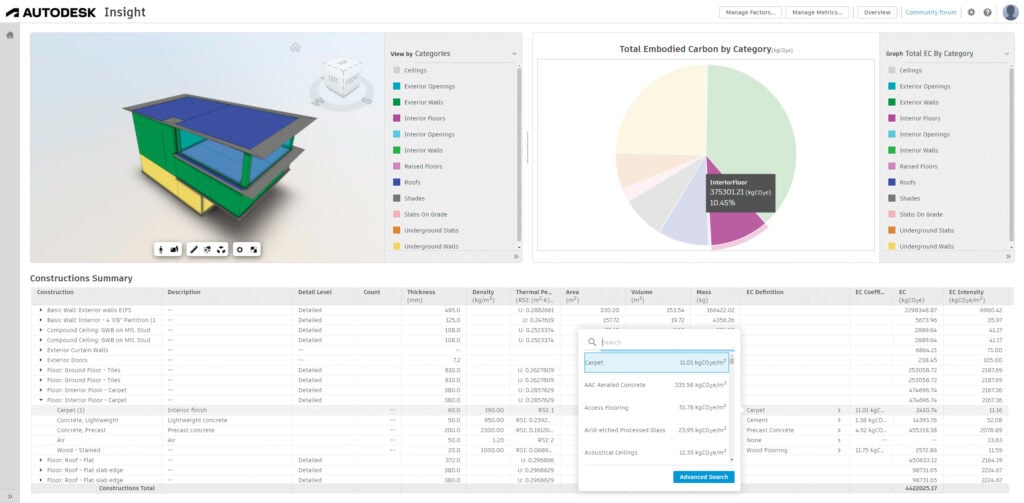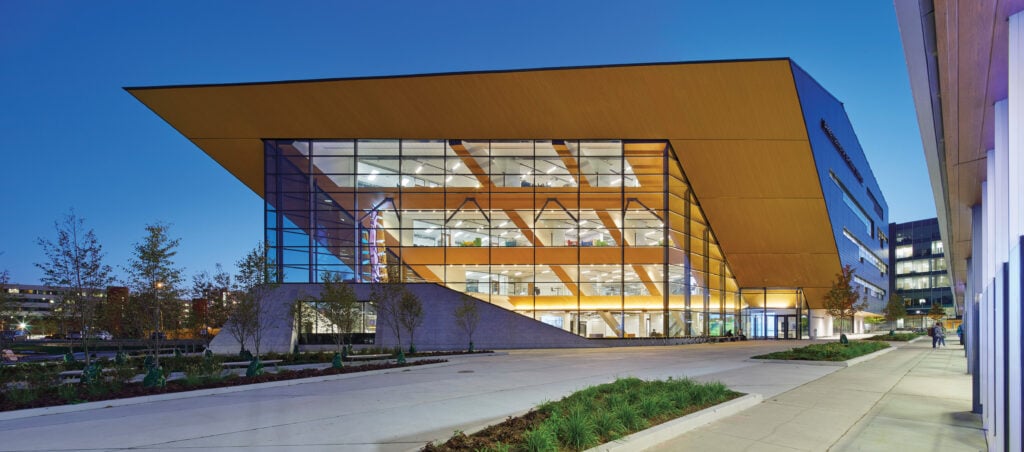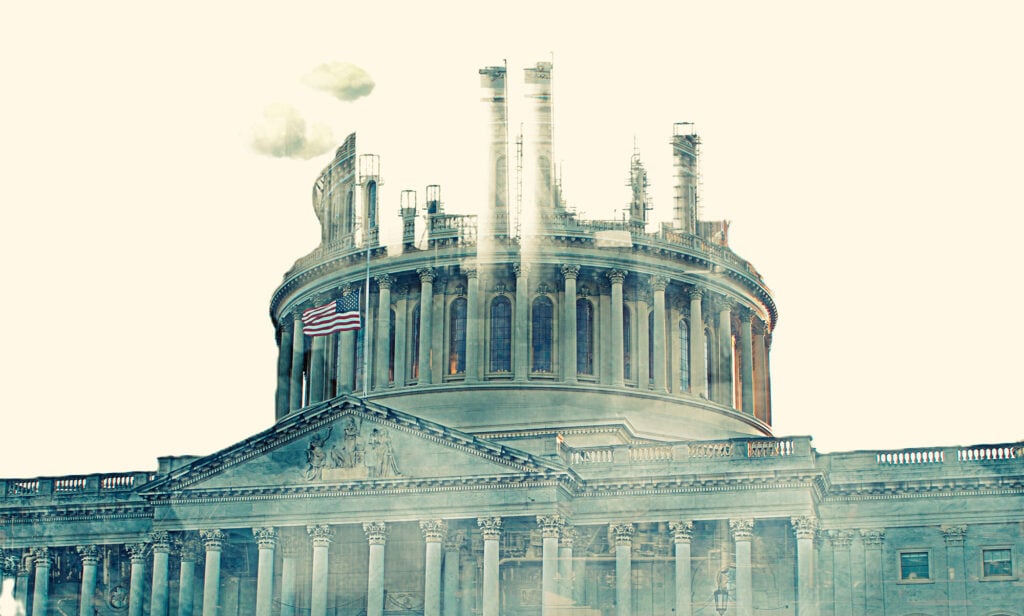
February 3, 2022
Urban Sequoia Raises the Bar on Carbon Neutral Urban Design
Disruption in technology is often associated with negative consequences like social disorder, environmental degradation, and economic marginalization. Facebook (now Meta) founder Mark Zuckerberg summed up this ethos with his early motto “Move fast and break things.” But disruption can also be beneficial. When done right, it can encourage health, wellness, efficiency, and equity. In that spirit, Metropolis is thrilled to share the winners of its first Responsible Disruptors program, honoring A&D technology projects that represent significant change for the better.
“If you move away from ‘This is how we’ve been doing it for decades’ and instead ask, ‘Are we really doing this right? What else can we do?’ it becomes a mind shift,” says Yasemin Kologlu, a principal at Skidmore, Owings & Merrill’s (SOM) New York office. The firm used this mind shift as a starting point for Urban Sequoia, a proposal in which buildings and their surrounding urban environment become carbon absorbers. First presented at the 2021 U.N. Climate Change Conference in Glasgow, the holistic concept, inspired by natural ecosystems, brings together sustainable urban design, innovations in materials, and emerging technologies at the scale of a building: a prototype high-rise that can sequester up to 1,000 tons of carbon per year.
The prototype begins with common sustainable materials and methods, including bamboo and timber, in addition to newly developed nature-based materials like BioBrick, a hybrid building product that includes photosynthetic saltwater bacteria capable of sequestering carbon dioxide and has the ability to regenerate after being damaged. The collective also turned to technological advancements like direct air capture, which can work with the natural conditions of the building, like stack effect and heat generation, to help the structure absorb carbon rather than emitting it. “SOM, like many in the industry, have placed tremendous focus on net zero and carbon neutrality,” says Chris Cooper, SOM partner. “But focusing on whole-life carbon really woke us up to the realization that net zero is only an improvement, not a solution.”
Designing the plan to be applicable to buildings of all sizes and types, SOM envisions it in terms of entire “forests” of carbon removal within cities, even extending to the spaces between buildings, like streets, sidewalks, and parks. Says Cooper: “The goal is to think about what materials to use, the quantities of green versus paved spaces, and the incorporation of technologies, in ways that all of these areas hopefully can grow into the greater urban network and become one absorbing ecosystem.”
Would you like to comment on this article? Send your thoughts to: [email protected]
Related
Products
Autodesk’s Forma Gets You Ahead of the Curve on Carbon
Autodesk Forma leverages machine learning for early-phase embodied carbon analysis.
Products
Eight Building Products to Help You Push the Envelope
These solutions for walls, openings, and cladding are each best-in-class in some way—offering environmental benefits, aesthetic choices, and design possibilities like never before.
Viewpoints
3 Sustainability News Updates for Q3 2024
Policy initiatives are gathering momentum as the federal government and building sector organizations align their expertise under the umbrella of the Inflation Reduction Act.





